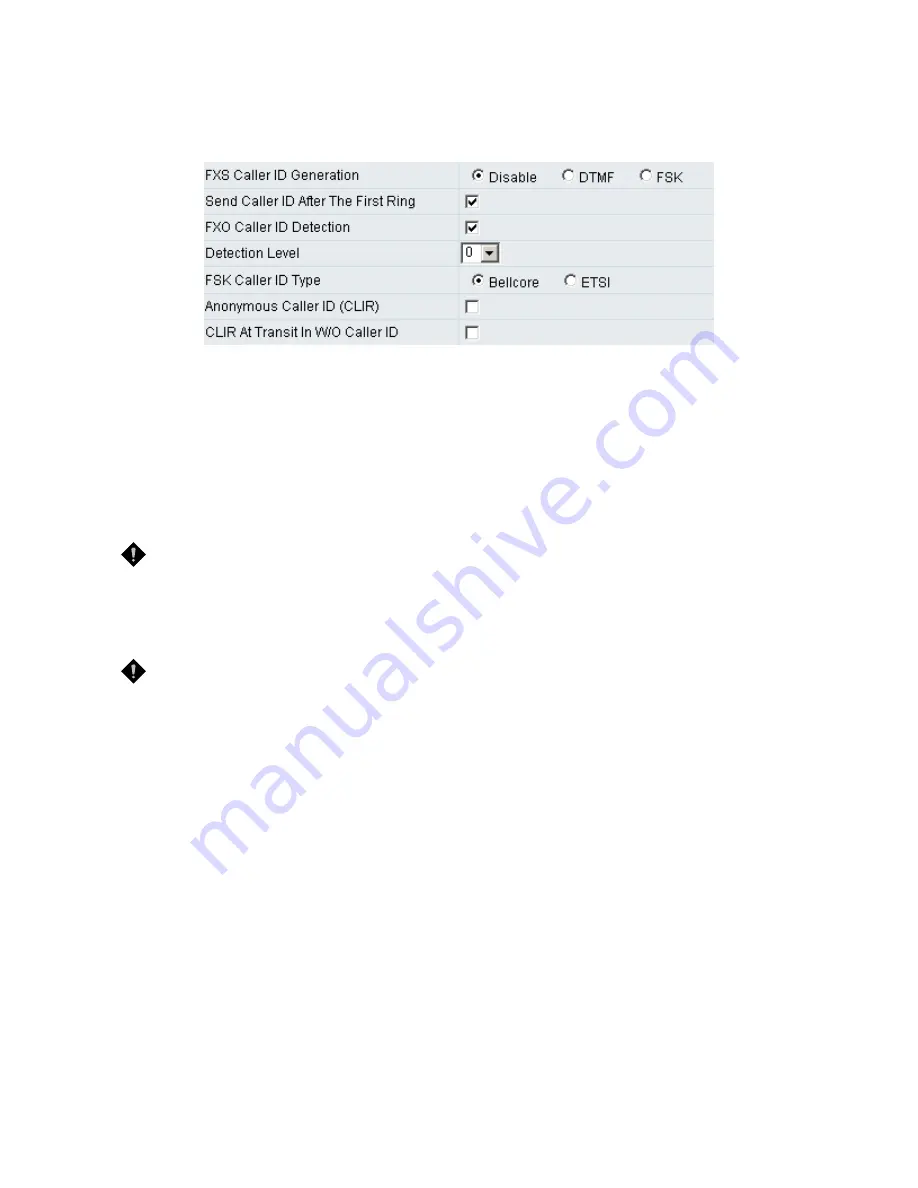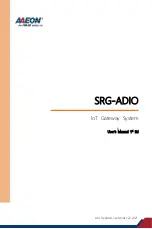
DVG-7022S/7044S/7062 User’s Manual
Caller ID
3-5 Caller ID
y
FXS Caller ID Generation:
Select this option to enable the caller ID display function on FXS ports.
When enabled, the caller’s phone number will be displayed on your phone set when the call comes
through. FSK is preferred in some countries.
y
Send Caller ID After The First Ring:
When enabled, the caller’s phone number will be sent to your
phone set after the first ring-on. When disabled, caller id will be sent before the First ring-on.
y
FXO Caller ID Detection:
Used to detect the Caller ID delivered from the PSTN to the FXO port.
When enabled, the Caller ID detected on the FXO port will be sent to the SIP Proxy Server on transit in
(dialing out) calls.
y
Detection Level:
If FXO can’t detect Caller ID, try to adjust it until it can.
NOTE:
If you register the gateway to a Proxy, you may be unable to make a call because the
gateway will not send the number for authorization.
y
FSK Caller ID Type:
Bellcore is used in North America and ETSI is used in EU.
y
Anonymous Caller ID (CLIR):
When enabled, anyone receiving a call from you will not display your
number if they have caller ID.
NOTE:
If you register the gateway to a Proxy and you check this option, you may be unable to make a
call. This is due to the fact that the VoIP gateway doesn’t send the number for authorization.
y
CLIR At Transit In W/O Caller ID:
When not enabled, if the FXO can detect caller ID in a call from
PSTN, the gateway will use the detected caller ID as caller identification when it makes transit in calls;
if FXO cannot detect caller ID in a call from PSTN, the gateway will use “anonymous” as caller
identification for transit in calls. When it enabled, the gateway will always uses “anonymous” as caller
identification for transit in calls.
D-Link Systems, Inc.
19
















































